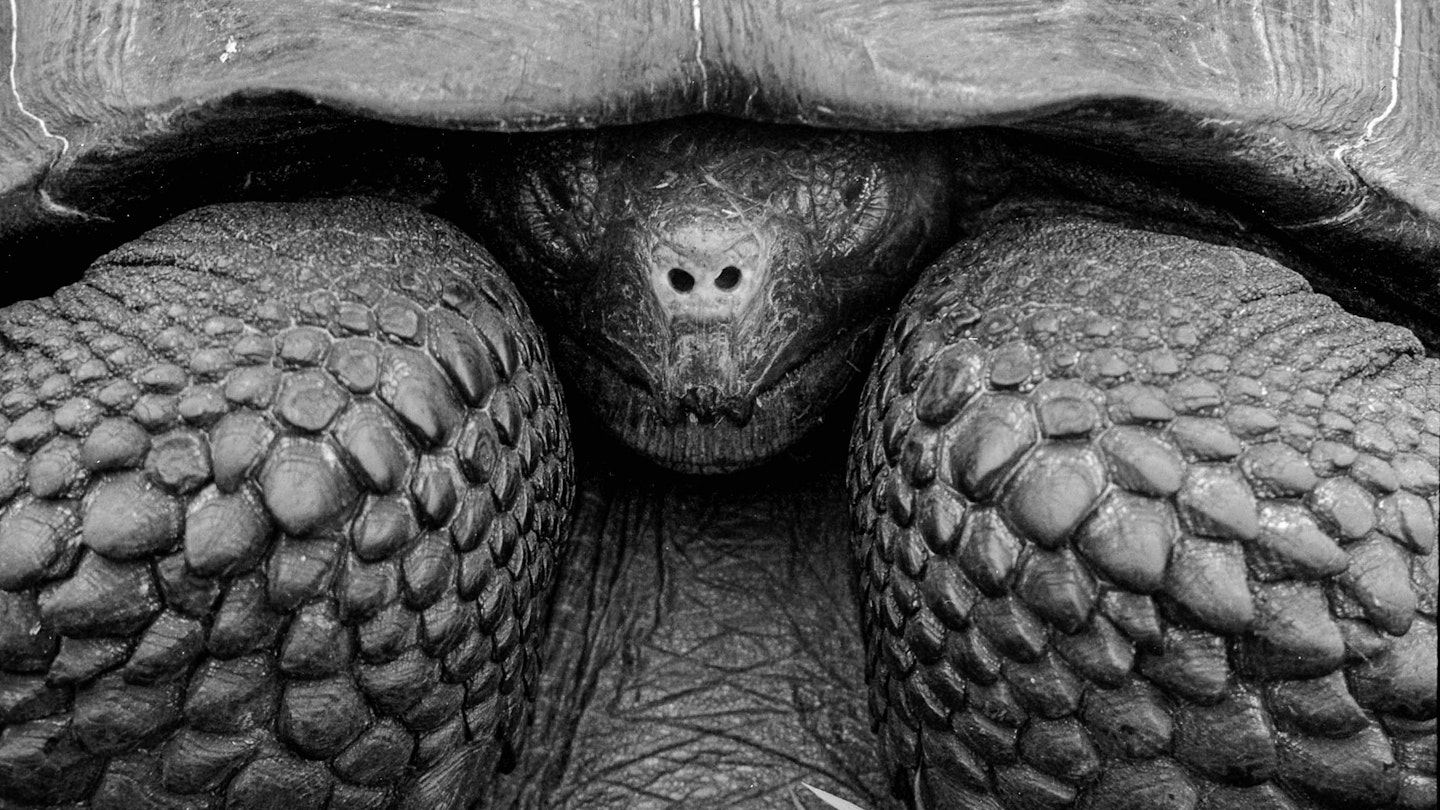Discover the Galapagos Islands
The Galapagos Islands offer a rare peek at what the world might look like devoid of human interference. Known for their role in Darwin’s theory of evolution, the islands were impossible to visit without leaving changed.

I wish I could say it was my own curiosity that brought me to Galapagos; however, I’d be lying. It was my mom. Seeing this legendary collection of islands had been a lifelong dream of hers; I just hitched a ride, more enamored by the idea of joining an expedition trip with National Geographic than with the thrill of visiting the destination itself. In fact, after I accepted the generous offer to be her bunkmate, I promptly hung up the phone and Googled “Galapagos Islands” to see where on earth they were located.

Roughly 600 miles off the coast of Ecuador, the Galapagos Islands are nature at its most raw — fierce landscapes of volcanic rock, intensely saturated colors, and a harsh game of survival of the fittest. The islands manage to be both barren and full.
Exploring Isla Fernandina
When I first stepped onto Isla Fernandina, it felt as if I’d traveled through time. Estimated to be somewhere between 60,000 to 400,000 years old, Fernandina is the youngest island in the volcanic archipelago — and it showed. Beneath my feet the ground resembled thick ribbons of black lava still emerging towards the sea. The fact that the island has an active volcano (which last erupted in 2018) didn’t help; therefore, even though I knew it was rock solid, I tread lightly, testing for any still-warm soft spots.

Along the ocean, the charcoal-gray marine iguanas stacked themselves on similarly colored lava rocks to sunbathe and were primarily noticeable when they expelled seawater through their nostrils. Down lower, I observed brightly colored Sally Lightfoot crabs scuttling around, scavenging for food. (What I didn’t see at the time, thankfully, was the unfathomable amount of racer snakes lurking between the rocks, waiting.)

If there’s anything that gives you perspective on our human experience, it’s watching wild animals struggle to survive right in front of your eyes. I watched tensely as a baby bird was stolen right from under its nesting parent by a hawk, then miraculously saved, only to be accidentally dropped on a rock. On any given island, the remains of unfortunate animals and birds baked in the sun, gradually disintegrating back into the sand.

On nearly every island they inhabited, but especially Isla Española, the sea lions came out to play. They excitedly hopped over to us, struck impossibly photogenic poses for our cameras, and even chased us on the beach. While snorkeling off of Isla Floreana, I had the most delightful surprise when a playful sea lion swam up to me and blew bubbles in my face. Furthermore, on other days spent on different islands, I observed zippy penguins, searched for sea turtles, or encountered marine iguanas as they munched algae off the underwater rocks.

On land, my overwhelming memory is how colorful everything was, like someone had just dialed up the saturation on reality. Brick-red dirt, bright green grass, iguanas with bold yellow and deep orange colors, and flamingos with perfectly pink feathers painted a remarkable contrast to the landscape. I had never witnessed such bright, rich colors before, and I have yet to see them again since.

Witnessing such pristine examples of nature, with minimal human interaction, was both beautiful and challenging to grasp. Observing how our presence affected wildlife on the islands was eye-opening. After witnessing such a raw display of what the world could look like without human interference, I recognized the dramatic impact we’ve had on the earth. Consequently, it made me reevaluate how my everyday actions and choices affect the planet. Twelve years later, these realizations continue to guide how I live, travel, and work, making me more conscious of my personal footprint and the effects of my presence on any destination.

There is no other place on earth like Galapagos. Thanks to the archipelago’s remote location, the Galapagos Islands and its flora and fauna evolved for millions of years without outside interference. Visiting here is akin to sneaking a look into a secret, untouched sliver of a truly natural world. Even now, after three hundred years of human visits, the ecosystems remain miraculously 95% intact — for now.
With this great privilege comes an even greater responsibility to keep the islands as intact as possible, especially as tourism continues to grow, lest we destroy the very things we are excited to experience. Always consider responsible, reputable companies, hotels, and tour operators that employ trained guides and eco-initiatives. Remember — you are the visitor in this unique world; thus, it is essential to leave it as you find it.





